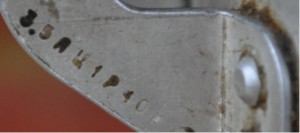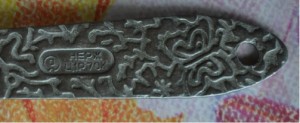by Gabriela Schaepman-Strub
Kytalyk, July 16, 2013
Time is running too fast and in one week we will be travelling up north to explore a hillside area and Russkoe Ustje, a village close to the Indigirka delta. Tomorrow I will be picked up to participate in a ceremony for the opening of the Tundra-taiga Forest Station. It will be a good opportunity to see this new research site established by our Japanese colleagues.
Measurements are going well, we now get regular energy balance component measurements of our two vegetation sites. Olga is great in helping us with species determination in our small diversity plots and with Braun-Blanquet relevees to assess the species associations of Kytalyk. We plan to compile a list of species of the area in English and Russian, including photos. This will be of interest to our international colleagues as well as to Tatjana who is responsible for the nature reserve. It is not easy to get such an experienced botanist to this site, and we are very grateful to Olga Khitun that she agreed to help us.
Given that we travel to such a remote site, involving rather high costs, we try to respond to sampling requests from the international science community, such as for pan-arctic investigations. This year we try to collect a few Cardamine species (no success yet, we only found Cardamine pratensis so far), mono- and dicots of the area for age and productivity determination from annual rings, as well as Salix polaris for genetic analysis. Olga knew that Salix polaris is not a very common species for this vegetation zone, but she found yesterday a first patch in the one and only snowbed and I discovered a second patch today in the same snowbed. This means we can provide 2 samples – instead of 30 as requested by the study, but maybe we will find more when travelling further north. It is good to have Olga here. She was growing up in Soviet Union times and has great stories from her many years with expeditions to Yamal. Lately I was wondering about the engraved numbers in the aluminium pot on the table.

Aluminium pot of 3.5 litres, price (ц for цена) 1 Rubel 40 Kopek. Photo: G.Schaepman-Strub, 14 July 2013.
Olga tells us that since the financial reform in 1961, prices for goods stayed the same until the Soviet Union broke apart. No changes in price meant that they could engrave the price onto pots, spoons, forks (and yes, most often people ate without knifes). We still have to learn a lot about old times in Russia! We found a new sport – who finds the next price? I think I will bring out some new spoons and forks next time in exchange for a real Soviet Union set with imprinted prices, mmhhh…. but then maybe some of the atmosphere will be gone in Kytalyk…. By the way – Olga, like most of the people older than 20 years, still remembers many prices for food (even though you could not get some food such as meat most often…):
| Bred (хлеб) | 14 Kopek per kilo |
| Meat | 2 Rub per kilo |
| Butter | 3 Rub 60 Kopek per kilo |
| Vodka | 3 Rub 62 Kopek |
| Cheese | approx. 3 Rub per kilo (depending on the type of cheese) |
| Sausage | 2 Rub 20 Kopek |
| Black caviar | 4 Rub for 400g (impossible to buy) |
| Can of instant coffee | 6 Rub (very expensive as well) |
1 Dollar was 60 Kopek at that time, but people were not allowed to exchange. This remained the same price throughout the whole Soviet Union. Well, not today anymore! A kg of potato costs around 20 Rub in St. Petersburg, but 200 Rub (approx. 5 EUR) in Chokurdah!

